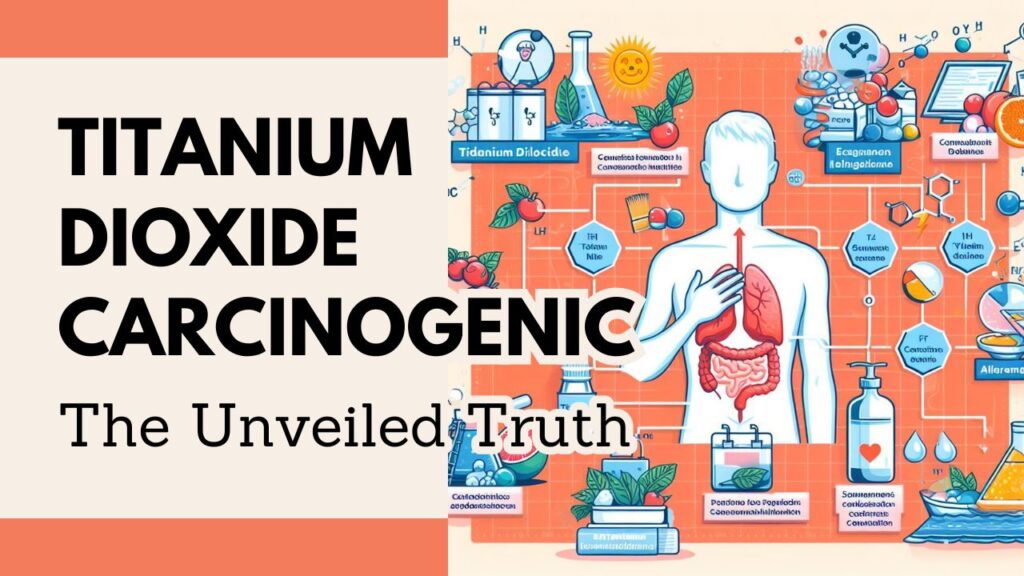Introduction
Titanium Dioxide Carcinogenic: In a world where chemical compounds exist in various consumer products, we encounter every day, one particular substance stands out with its widespread usage – titanium dioxide. Often found in sunscreens, cosmetics, and even food products, this whitening agent offers countless benefits. However, beneath its innocuous appearance lies a growing concern – the potential toxicity and carcinogenicity of titanium dioxide. In this article, we delve deep into this controversial topic, examining scientific studies and expert opinions to shed light on its true nature and its impact on human health.
The Ubiquitous Presence of Titanium Dioxide
Since its discovery in the late 18th century, titanium dioxide has become one of the most widely used whitening agents in consumer products. Its versatility and ability to create a bright, opaque appearance have made it an integral component in an array of industries. From sunscreen and toothpaste to paint and paper, titanium dioxide has found its way into numerous everyday items.
The Chemistry Behind Titanium Dioxide
Titanium dioxide, with its chemical formula TiO2, is a naturally occurring oxide of titanium. It exists in two forms: rutile and anatase. Rutile, the most commonly used form, exhibits greater stability, while anatase offers increased reactivity. The small particle size and high refractive index of titanium dioxide make it particularly effective at scattering light, imparting a vibrant white color to products.
The Potential Titanium Dioxide Carcinogenic/Toxicity Debate
Despite its widespread use, concerns have arisen regarding the potential toxicity and Titanium Dioxide Carcinogenic. Various studies have explored these claims, delivering conflicting results and stoking the debate.
Inhalation Risks in the Workplace
In industrial settings where titanium dioxide nanoparticles are produced or used, understanding the potential health risks is crucial. Inhalation of fine particles may pose a threat to workers. The International Agency for Research on Cancer (IARC) classified titanium dioxide as “possibly carcinogenic to humans” when inhaled in the form of powder during occupational exposure. However, it is important to note that while the IARC recognizes the potential hazard, the actual risk to the general public from daily exposure to titanium dioxide nanoparticles is still a subject of scientific investigation.
Limited Evidence of Oral Ingestion Risks: Titanium Dioxide Carcinogenic

When it comes to oral ingestion of titanium dioxide, the scientific evidence remains inconclusive. Studies conducted on animals have shown conflicting results, making it difficult to draw definitive conclusions on its human health risks. Although titanium dioxide is considered generally recognized as safe (GRAS) by the U.S. Food and Drug Administration (FDA) in certain amounts, further research is required to fully evaluate its long-term effects on human health.
Absorption Through Skin: Titanium Dioxide Carcinogenic
Concerns have also been raised regarding the potential dermal absorption of titanium dioxide nanoparticles. However, studies have indicated that the outermost protective layer of the skin, the stratum corneum, acts as an efficient barrier against the penetration of nanoparticles. The limited systemic absorption of titanium dioxide through intact skin further supports the notion that the risks associated with dermal exposure are minimal.
Understanding the Role of Nanoparticles
The size of nanoparticles is a critical factor that influences their potential toxicity. Nano-sized particles have a higher surface area, which may lead to increased reactivity and the ability to penetrate biological barriers. While nano-sized titanium dioxide particles are used in some applications, it is essential to differentiate between nanoparticles and larger particles when evaluating their potential health risks.
The Importance of Risk Assessment: Titanium Dioxide Carcinogenic
Risk assessment studies are imperative to comprehensively assess the potential toxicity of titanium dioxide nanoparticles. These studies evaluate exposure levels, routes, durations, and effects on various organs. Identifying safe exposure thresholds plays a crucial role in ensuring consumer safety.
Regulatory Measures and Standardization
Recognizing the significance of public health, regulatory bodies around the world have implemented measures to monitor and regulate the use of titanium dioxide nanoparticles. The European Food Safety Authority (EFSA) established an acceptable daily intake level for titanium dioxide nanoparticles, further reinforcing the need for thorough examination and transparent regulations.
Conclusion of Titanium Dioxide Carcinogenic
The toxicity of titanium dioxide remains a subject of ongoing scientific inquiry. While concerns exist, particularly regarding occupational exposure to nanoparticles, the evidence supporting the direct carcinogenicity of titanium dioxide in everyday consumer products is still limited. Transparency, continued research, and effective regulatory measures are key in evaluating and managing potential risks. As consumers, understanding the complexities surrounding titanium dioxide empowers us to make informed choices and promotes public health.
“The potential toxicity of titanium dioxide demands an evidence-based examination to ensure public safety.” – Dr. Elizabeth Thompson, Environmental Health Specialist






Pingback: Do you think the production of vinyl chloride and use of PVC products are safe? - Safe Climber Overseas Pvt. Ltd.
Pingback: Awesome Titanium Oxide Guide: Expert Tips and Secrets - Safe Climber Overseas Pvt. Ltd.